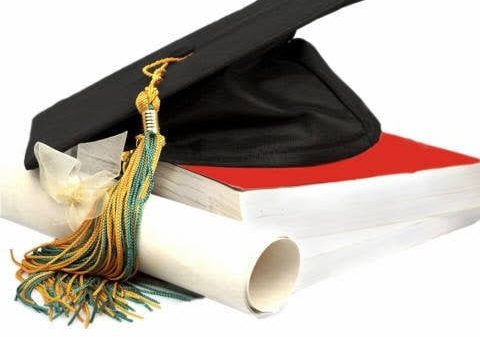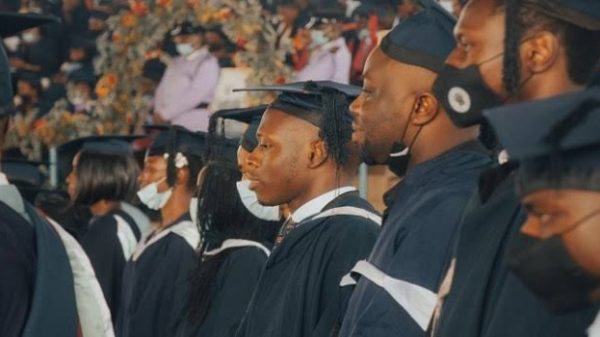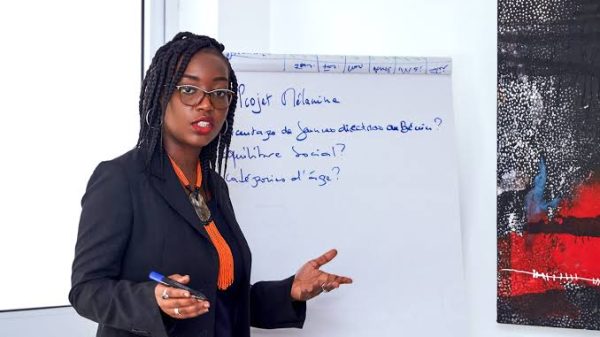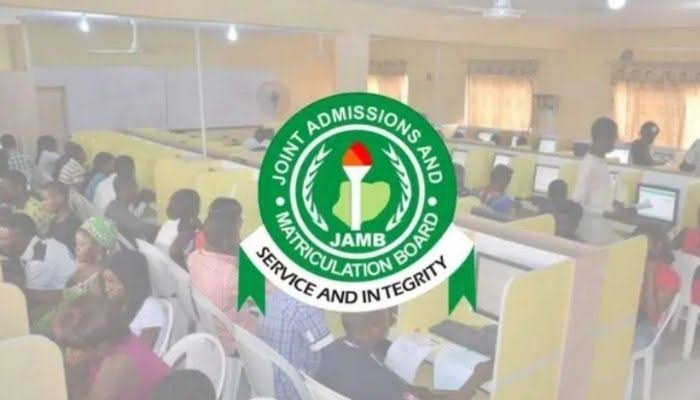JAMB Chemistry Past Questions and Answers 2023/2024
The Joint Admissions and Matriculation Board (JAMB) is the body responsible for conducting the Unified Tertiary Matriculation Examination (UTME) in Nigeria.
The UTME is a prerequisite for admission into most universities and polytechnics in Nigeria.
Chemistry is one of the three compulsory subjects for the UTME. Past questions and answers are a valuable resource for students preparing for the UTME. They can help students to familiarise themselves with the types of questions that are asked, and to practice answering them.
This article provides a comprehensive guide to JAMB Chemistry past questions and answers. It includes information on where to find past questions, how to use them effectively, and some tips for answering chemistry questions.
Where to Find JAMB Chemistry Past Questions
There are a number of places where you can find JAMB Chemistry past questions. The JAMB website has a free archive of past questions dating back to 2005. You can also find past questions on a number of websites and online forums.
When choosing a source for past questions, it is important to make sure that the questions are authentic.
There are a number of websites that sell fake past questions. These questions are often of poor quality, and they may not be representative of the actual UTME.
How to Use JAMB Chemistry Past Questions
The best way to use JAMB Chemistry past questions is to practice answering them under timed conditions. This will help you to get used to the format of the exam, and to the types of questions that are asked.
When you are practicing, it is important to track your progress. This will help you to identify your strengths and weaknesses, and to focus your revision on the areas where you need the most help.
Tips for Answering Chemistry Questions
Here are some tips for answering chemistry questions:
-
Read the question carefully and make sure that you understand what is being asked.
-
Identify the key concepts that are being tested.
-
Use your knowledge of the concepts to answer the question.
-
If you are unsure of the answer, try to eliminate the incorrect options.
-
If you are still unsure of the answer, guess and mark the question for review later.
1. Which of the following statements is NOT correct?
A. The average kinetic energy of a gas is directly proportional to its temperature
B. At constant temperature, the volume of a gas increases as the pressure increases
C. The pressure of a gas is inversely proportional to its volume
D. The temperature of a gas is directly proportional to its volumeCorrect Answer: B
2. Zinc Oxide is a
A. Basic Oxide
B. Acidic Oxide
C. Amphoteric Oxide
D. Neutral OxideCorrect Answer: C
3. When sodium chloride and metallic sodium are each dissolved in water
A. both processes are exothermic
B. both processes are endothermic
C. the dissolution of metallic sodium is endothermic
D. the dissolution of metallic sodium is exothermic
E. the dissolution of sodium chloride is explosiveCorrect Answer: D
4. The periodic classification of elements is an arrangement of the elements in order of their
A. Atomic Weights
B. Isotopic Weights
C. Molecular Weights
D. Atomic NumbersCorrect Answer: D
5. In the reaction between sodium hydroxide and sulphuric acid solutions, what volume of 0.5 molar sodium hydroxide would exactly neutralise 10cm3 of 1.25 molar sulphuric acid?
A. 5cm3
B. 50cm3
C. 20cm3
D. 25cm3Correct Answer: B
6. A small quantity of solid ammonium chloride (NH4Cl) was heated gently in a test tube, the solid gradually disappears to produce two gases. Later, a white cloudy deposit was observed on the cooler part of the test tube. The ammonium chloride is said to have undergone
A. distillation
B. sublimation
C. precipitation
D. evaporationCorrect Answer: B
7. Elements P, Q, R, S have 6, 11, 15, 17 electrons respectively, therefore,
A. P will form an electrovalent bond with R
B. Q will form a covalent bond with S
C. R will form an electrovalent bond with S
D. Q will form an electrovalent bond with SCorrect Answer: D
8. An element X forms the following compounds with chlorine; XCl4, XCl3, XCl2. This illustrates the
A. law of multiple proportions
B. law of chemical proportions
C. law of simple proportions
D. law of conservation of massCorrect Answer: A
9. The oxidation state of chlorine in potassium chlorate is
A. +1
B. +2
C. +3
D. +5Correct Answer: D
10.When air which contains the gases Oxygen, nitrogen, carbondioxide, water vapour and the rare gases, is passed through alkaline pyrogallol and then over quicklime, the only gases left are;
A. nitrogen and carbon dioxide
B. the rare gases
C. nitrogen and oxygen
D. nitrogen and the rare gasesCorrect Answer: D
11. When heat is absorbed during a chemical reaction, the reaction is said to be
A. thermodynamic
B. exothermic
C. isothermal
D. endothermicCorrect Answer: D
12. When large hydrocarbon molecules are heated at high temperature in the presence of a catalyst to give smaller molecules, the process is known as
A. disintegration
B. polymerization
C. cracking
D. degradationCorrect Answer: C
13. The pH of four solutions W, X, Y, Z are 4, 6, 8, 10 respectively, therefore
A. none of these solutions is acidic
B. the pH of Y is made more acidic by addition of distilled water
C. Z is the most acidic solution
D. W is the most acidic solutionCorrect Answer: D
14. When each of the nitrates of Potassium, Magnesium and iron is heated
A. all the nitrates decompose to their oxides
B. the nitrate of magnesium gives the nitrite and oxygen
C. the nitrates of iron magnesium and iron give the oxides
D. the nitrate of iron gives the nitrite and oxygenCorrect Answer: C
15. Which of the following metals cannot replace hydrogen from water or steam?
A. Sodium
B. Copper
C. Iron
D. CalciumCorrect Answer: B
16. A sample of hard water contains some calcium sulphate and calcium hydrogen carbonate. The total hardness may therefore be removed by
A. boiling the water
B. adding excess calcium hydroxide
C. adding a calculated amount of calcium hydroxide
D. adding sodium carbonateCorrect Answer: D
17. During the electrolysis of copper II sulphate between platinum electrodes, if litmus solution is added to the anode compartment,
A. the litmus turns blue but no gas is evolved
B. the litmus turns blue and oxygen is evolved
C. the litmus turns blue and hydrogen is evolved
D. the litmus turns red and oxygen is evolvedCorrect Answer: D
18. The reaction between an organic acid and an alcohol in the presence of an acid catalyst is known as;
A. saponification
B. dehydration
C. esterification
D. hydrolysisCorrect Answer: C
19. The IUPAC names of the compounds CH3COOH and CH2=CH2 are respectively;
A. acetic acid and ethene
B. ethanoic acid and ethene
C. methanoic acid and ethylene
D. ethanol and etheneCorrect Answer: A
20. If 30cm3 of oxygen diffuses through a porous pot in 7 seconds, how long will it take 60cm3 of chlorine to diffuse through the same pot, if the vapour densities of oxygen and chlorine are 16 and 36 respectively?
A. 9.3 sec
B. 14 sec
C. 21 sec
D. 28 secCorrect Answer: C
21. Brass and bronze are both metallic alloys. Which of the following constituents is common to both alloys?
A. Tin
B. Zinc
C. Copper
D. LeadCorrect Answer: C
22. Which of the following gases may not be dried with concentrated sulphuric acid?
A. HCl
B. NH3
C. Cl2
D. SO2Correct Answer: B
23. Which of the following reactions does not take place in the smelting of iron in a blast furnace?
A. CaCO3(s) CaO(s) + CO2(g)
B. C(s) + O2(g) CO2(g)
C. 3FeCO(s) + 2OCO2(g) FeO4(s)
D. SiO2(s) + CaO(s) CaCO3(s)Correct Answer: C
24. Which of the following is not a member of the homologous series of the paraffins (alkanes)?
A. C24H48
B. C5H12
C. C7H16
D. C15H32Correct Answer: A
25.When ammonia and hydrogen ion bond together to form ammonium ion, the bond formed is called
A. ionic bond
B. electrovalent bond
C. covalent bond
D. co-ordinate bondCorrect Answer: D
26. A second alkanol can be oxidized to give an
A alkanone
B alkyne
C alkanoic acid
D alkanalCorrect Answer: A
27 Which of the following will give a precipitate with an aqueous solution of copper (I) chloride?
A But-2-ene
B But-1-ene
C But-2-yne
D But-1-yneCorrect Answer: D
28 The IUPAC name for CH3CH2COOCH2CH3 is
A methylpropanoate
B ethylethanoate
C ethylpropanoate
D methylethanoateCorrect Answer: C
29 A certain hydrocarbon on complete combustion at s.t.p produced 89.6dm3 of CO2 and 54g of water. The hydrocarbon should be
A C6H6
B C4H10
C C5H10
D C4H6Correct Answer: D
30 2-methylprop-1-ene is an isomer of
A 3-methyl but-1-ene
B 2-methyl but-1-ene
C but-2-ene
D pent-2-eneCorrect Answer: D
31 An example of an alcohol is
A. CCl4
B. CH3COOH
C. CHCl3
D. CH3OHCorrect Answer: D
32 The IUPAC name of the compound CF3 CHBrCl is
A 2-chloro-2-bromo-1,1,1-trifluoroethane
B 2-bromo-2-chloro-1,1,1-trifluoroethane
C 1-bromo-1-chloro-2,2,2-trifluoroethane
D 1,1,1-trifluoro-2-bromo-2-chloroethaneCorrect Answer: B
33 Synthetic rubber is obtained from the polymerization of
A neoprene
B isoprene
C butandiene
D propyleneCorrect Answer: B
34. Burning magnesium ribbon in air removes which of the following
(i) oxygen
(ii) nitrogen
(iii) argon and
(iv) carbon(iv)oxide?A i and iv only
B i, ii, iii and iv only
C i only
D i and ii onlyCorrect Answer: C
35. Which of the following is the best starting material for the preparation of oxygen? Heating of trioxonitrate (v) with
A Pb
B Zn
C Ca
D NaCorrect Answer: A
36. The nucleus of an atom contains
A. protons only
B. neurons only
C. protons and Neutron
D. neutrons and electrons
E. protons and neutronsCorrect Answer: c
37. Hypochlorous acid is used as a bleach because
A. it is a strong acid
B. it yields chlorine readily in pure water
C. it is an oxidising agent
D. it is a weak acidCorrect Answer: C
38.The normal boiling point of a liquid is defined as
A. the temperature at which its vapour pressure equals the atmospheric pressure
B. the temperature at which bubbles begin to form
C. the temperature at which the vapour pressure equals 1 temperature
D. the temperature at which the rate of condensation of vapour equals the rate of vaporisation of the liquidCorrect Answer: C
39. Which of the following compounds will form a solution if exposed to air?
A.Na2CO3.10H2O
B.NaNO3
C.CuSO4
D.CaCl2
E.Na2SO4.10H2OCorrect Answer: D
40. The most common type of chemical reaction that alkanes undergo is
A. substitution
B. addition
C. condensation
D. polymerisationCorrect Answer: A







